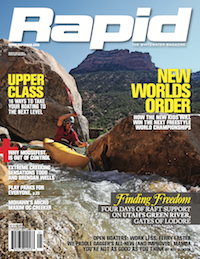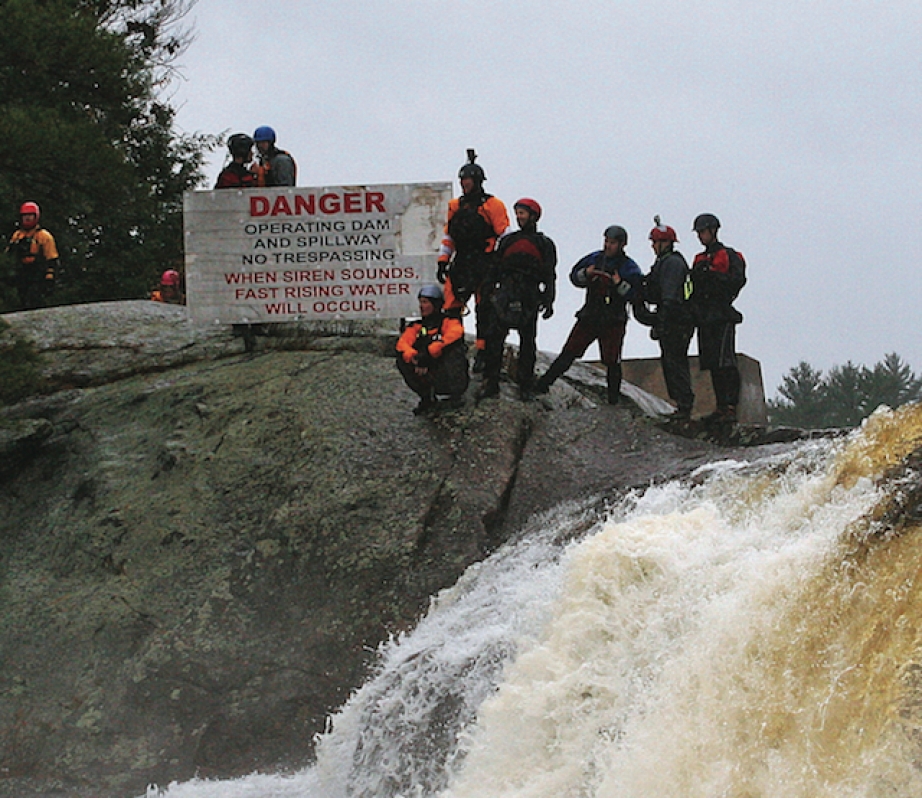Hazardous rapid, high risk of injury, safe return doubtful. Honor and recognition in event of success.
When a tethered swimmer finally pulled William De Angelis from a sticky hydraulic on New York’s Lower Moose River last October, it was too late. The 62-year-old New Jersey man was already dead, his neck broken by the violently recirculating water.
De Angelis’ death was the tragic finale to a carnage-filled whitewater weekend that witnessed a shocking number of near drownings and more than a dozen hospitalizations each day for injuries ranging from dislocated shoulders and concussions to knocked out teeth and lacerations. All this at an event billed by local outfitter and promoter, Mountainman Outdoor Supply Company, as “New York’s Premier Whitewater Festival.”
The brainchild of New York whitewater pioneer and river advocate Chris Koll, Moose Fest first kicked off in October 1994. The American Whitewater-backed event brought hundreds of boaters to the then little-known Moose River at Old Forge, New York, to enjoy the recreational dam releases for which Koll and others had fought and won. Since then, the numbers have stayed strong, but with the financial realities of declining industry participation, the festival structure has grown more nebulous. There’s no longer an official organizer or venue, not even a website; paddlers simply mark their calendars and show up.
“The event runs itself,” says Koll, who still coordinates the releases and posts flow information on Internet forums.
At typical flows, the Lower and Bottom Moose are challenging class IV–V runs that should give even experienced boaters pause. Yet Juraj Kobzik, an Ottawa-area paddler who attended his first Moose Fest last year, writes on his blog that many newcomers observe a festival tradition of running Agers Falls—a 20-foot drop above a bumpy run-out of holes and slides—blind. He goes on to describe the scene below the falls: “About 20…people ran the drop ducky-style and…they were all pulling their skirts and swimming.”
Former Pyranha rep, Matt Hamilton, has attended the event every year for the past 15 and says, “I don’t think I’ve ever been to a Moose Fest where someone didn’t end up at the hospital. There’s always some sort of carnage.”
It doesn’t take a statistician to figure out that more paddlers on the river equates to greater chances of paddlers getting hurt or even killed. But the higher incidence of injuries at events like Moose Fest is more than just a numbers game—it’s a product of human nature.
In his pivotal 2002 article, Heuristic Traps in Recreational Avalanche Accidents, decision science researcher Ian McCammon identified six com- mon decision-making pitfalls that contributed to the 715 accidents he reviewed. While McCammon was seeking an explanation for why experi- enced backcountry skiers were making really basic mistakes surrounding avalanche safety, the traps he found are just as prevalent on the river.
One in particular—complacency in familiar environments—seems to have played a significant role at last year’s festival. A lightning strike earlier in the season incapacitated the dam and the flow on the Bottom Moose rose to 5’7”—well above the typical 3–4 feet—festival weekend. “We tried to warn people that with the dam off, the river is a different animal,” says Koll, but many paddlers simply didn’t register that an “easy class V” run had become a “full-on class V” monster.
Laurence-Olivier Neron, a Quebec open boater who became trapped in a hydraulic on the Bottom Moose after failing to wait for an all clear signal and colliding with another boat, says he thinks the charged atmosphere of festivals provokes the use of poor judgment. “In my excitement, I disrespected many basic whitewater rules that I knew and usually respected,” he says. Neron was luckier than De Angelis; he lost consciousness, flushed out of the hole, and was rescued by friends downstream.
Is Moose Fest more dangerous than other events? Hamilton doesn’t think so. He cites observing similar injury rates at West Virginia’s Gauley Fest. Koll agrees, “I think [Moose Fest] has more of a reputation for carnage in the bars than on the river.”
Festival crowds mean more learning opportunities and more throw bags and boats to help with rescues, but they also mean more exposure to risk. Koll believes safety will come from respect, “Enough paddlers got spanked [last year] that I think people will approach the river with a little less cavalier attitude.”
 This article first appeared in the Spring 2012 issue of Rapid Magazine.
This article first appeared in the Spring 2012 issue of Rapid Magazine.




